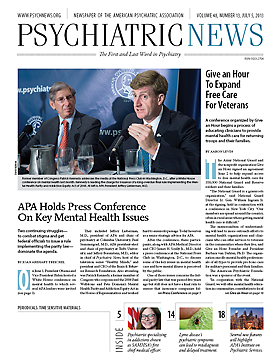At least once during their first year of college, more than half of students drink more than the limits for low-risk or moderate alcohol consumption recommended by the National Institute on Alcohol Abuse and Alcoholism (NIAAA), a survey in three New England universities showed.
And more female students exceeded the weekly alcohol limit than did male students, suggesting that young women may not be aware of how the NIAAA guidelines describe acute and chronic risks of alcohol use in men and women differently.
Among the nearly 1,000 students surveyed, almost two-thirds had at least one occasion during the college year in which they drank more than the weekly or daily alcohol-consumption recommendations by NIAAA. The proportions were nearly identical in male and female students. The average age of survey respondents was 18.4.
A little over half (51 percent) of the female students exceeded the weekly drinking limit for women, higher than the 45 percent of male students who exceeded the weekly drinking limit for men. This was primarily due to the gender difference in NIAAA’s recommendations, the authors found.
NIAAA guidelines recommend no more than three drinks daily for women and four drinks daily for men. However, the weekly limit is seven drinks for women and 14 for men. In other words, the weekly limit for women is 50 percent of that for men, proportionally less than the daily guideline. One drink is defined as 12 ounces of beer, 5 ounces of wine, or 1.5 ounces of liquor.
The daily limits are intended to prevent acute alcohol poisoning, while the weekly limits help prevent the harmful consequences of chronic excessive drinking, the authors noted, as epidemiological data indicate that women are more vulnerable than men to the long-term harm of excessive drinking, such as risks for liver disease and breast cancer.
“Education given to college students tends to focus on acute intoxication, such as drunk driving and alcohol poisoning,” Bettina Hoeppner, Ph.D., told Psychiatric News. She is the lead author of the study and an assistant professor of psychology at Harvard Medical School. “Acute risk is more noticeable and garners more attention, especially in the college setting. However, there is not a lot [of education] about the toxicity of chronic drinking.”
Hoeppner believes that female students are aware of the recommendation that they should drink less than their male peers on an occasion but not necessarily of the weekly guidelines and the risks of chronic excessive drinking. “It is easy to pass the [NIAAA] limit with one drink a day and a couple of drinks on the weekend,” she pointed out.
Hoepnner urged mental health professionals to increase young people’s awareness of not only the acute danger of intoxication but also the long-term consequences of frequent drinking. “Hopefully, students will remember the information after they leave school,” she said. ■
